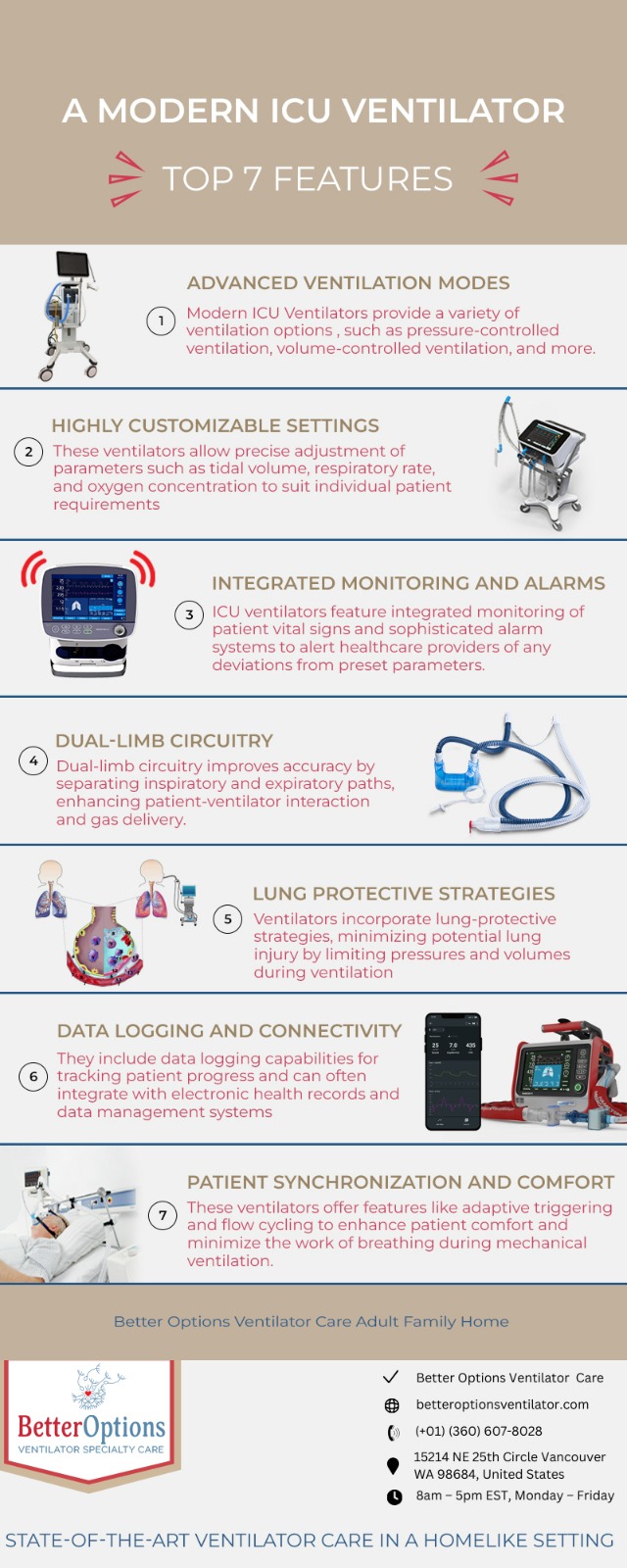Modern ICU (Intensive Care Unit) ventilators are sophisticated medical devices designed to provide mechanical ventilation to patients who are unable to breathe adequately on their own. These ventilators play a crucial role in critical care settings, including ICUs, by delivering oxygen and managing the patient’s respiratory functions. Here are some key features and components of modern ICU ventilators:
1.Modes of Ventilation: Modern ventilators offer a wide range of ventilation modes to suit different patient needs. These modes include:
Assist-Control (AC) ventilation: Provides a set number of breaths per minute, with the option for the patient to trigger additional breaths.
Pressure Support (PS): Assists spontaneous breaths initiated by the patient.
Continuous Positive Airway Pressure (CPAP) and Bi-level Positive Airway Pressure (BiPAP): Used for non-invasive ventilation.
Volume Control (VC) and Pressure Control (PC): Allows precise control of tidal volume and inspiratory pressure.
Monitoring and Alarms: Ventilators are equipped with sensors to monitor various parameters, such as oxygen concentration, tidal volume, respiratory rate, and airway pressure. Alarms alert healthcare providers to deviations from preset parameters, ensuring patient safety.
2.Touchscreen Interface: Many modern ventilators feature intuitive touchscreen interfaces that allow healthcare providers to adjust settings, view waveforms, and monitor patient status easily.
3.Data Logging and Connectivity: Ventilators often have built-in data logging capabilities, enabling healthcare providers to review and analyze patient data over time. They can also be integrated with electronic medical records (EMRs) for seamless documentation.
4.Battery Backup: To ensure uninterrupted ventilation in case of power outages, modern ventilators are equipped with battery backup systems.
5.Ventilator Modes for Specific Conditions: Some ventilators offer specialized modes for conditions like acute respiratory distress syndrome (ARDS) or obstructive lung disease.
6.Humidification: Integrated humidification systems maintain adequate humidity levels in the inspired air to prevent airway drying.
7.Advanced Monitoring: Some ventilators offer advanced monitoring options, such as capnography (measurement of end-tidal carbon dioxide) and esophageal pressure monitoring, to assess lung compliance and patient-ventilator synchrony.
8.Adaptive Algorithms: Ventilators may employ adaptive algorithms to adjust ventilation parameters based on the patient’s condition, reducing the risk of ventilator-induced lung injury (VILI).
9.Portability: Some modern ventilators are designed to be more compact and portable, allowing for greater flexibility in patient care, including transportation within the hospital.
10.Noise Reduction: Ventilators often incorporate noise-reduction technologies to minimize disturbance to both patients and healthcare providers in the ICU.
11.Infection Control Features: Ventilators are designed with features that facilitate easy cleaning and disinfection to minimize the risk of healthcare-associated infections.
Modern ICU ventilators are complex machines that require skilled healthcare professionals to set up, operate, and monitor. They are a critical component of life support in intensive care units and play a crucial role in treating patients with respiratory failure or other severe medical conditions.
Infographic Source: https://betteroptionsventilator.com/infographic-top-7-features-of-a-modern-icu-ventilator/







Leave a Reply